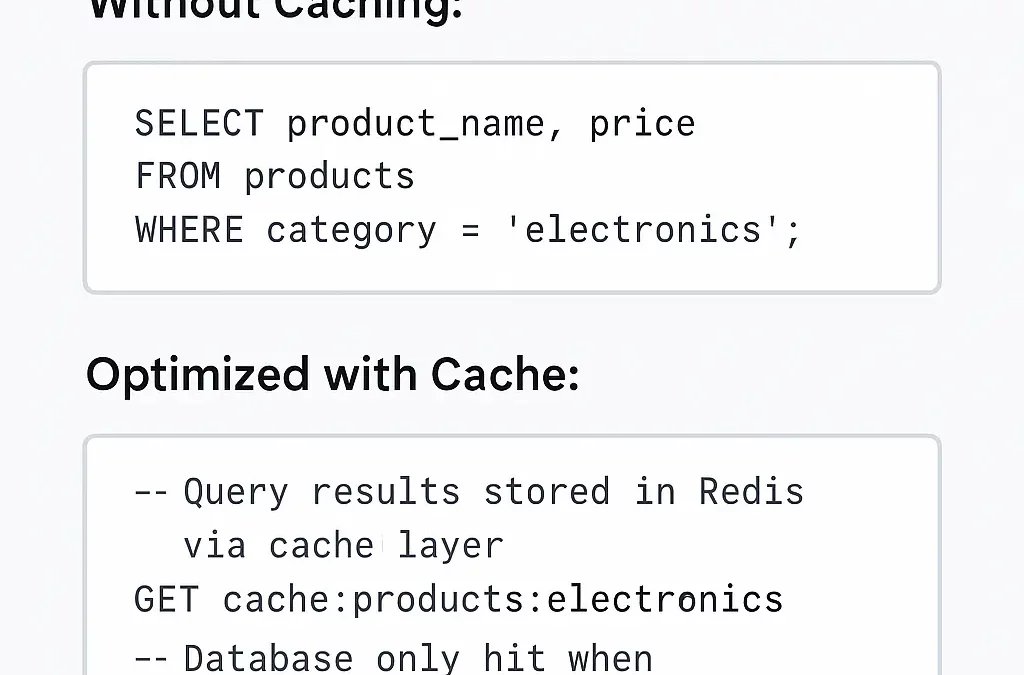The Power of Database Caching
Database caching acts as a performance booster that reduces redundant queries and delivers lightning-fast responses. By integrating caching strategies into DBDesigner’s visual workflows, teams can scale applications while minimizing load on their database engines (MySQL, PostgreSQL, MongoDB, Snowflake, etc.).
“Smart caching cuts response times by up to 80% in high-traffic applications, according to the 2024 Cloud Scalability Report.” – Global Data Insights
Why Caching Transforms Application Performance
- Instant Response: Serve frequent queries from memory instead of disk
- Reduced Load: Offload repetitive requests from the primary database
- Scalability: Handle traffic spikes without adding costly hardware
- Integration Ready: DBDesigner helps model caching layers visually
Types of Database Caching
With visual database design, you can plan caching strategies seamlessly:
- Query Caching: Stores results of frequent SQL queries
- Object Caching: Saves frequently accessed rows or entities
- Full-Page Caching: Delivers pre-rendered results for web apps
- Distributed Caching: Uses external systems like Redis or Memcached
- Write-Through & Write-Back: Synchronizes cache with DB automatically
Real-World Caching Example
Without Caching:
SELECT product_name, price
FROM products
WHERE category = 'electronics';Optimized with Cache:
-- Query results stored in Redis via cache layer
GET cache:products:electronics
-- Database only hit when cache expiresCache Benefits
- Reduced query load by 65%
- Improved API response time from 1.4s to 0.08s
- Enabled real-time scalability
Advanced Caching Strategies
- TTL (Time-to-Live): Control cache expiry per query
- Lazy Loading: Load cache entries only on demand
- Cache Invalidation: Auto-expire when underlying data changes
- AI Integration: DBDesigner suggests queries best suited for caching
Cache Maintenance Best Practices
Monitoring
- Track hit/miss ratios
- Identify stale data issues
Tuning
- Set optimal TTLs for fast-changing data
- Allocate enough memory for hot datasets
Design
- Cache query patterns, not random data
- Leverage distributed caches for large-scale apps
Conclusion: Cache for Scalability
Modern engineering teams use database caching to:
- Accelerate responses for end-users
- Reduce database workloads dramatically
- Support millions of queries per second
Ready to Speed Up Your Apps?
Model caching strategies visually today (with AI-powered insights)
For Enterprise Workloads:
Design caching-aware architectures


Recent Comments